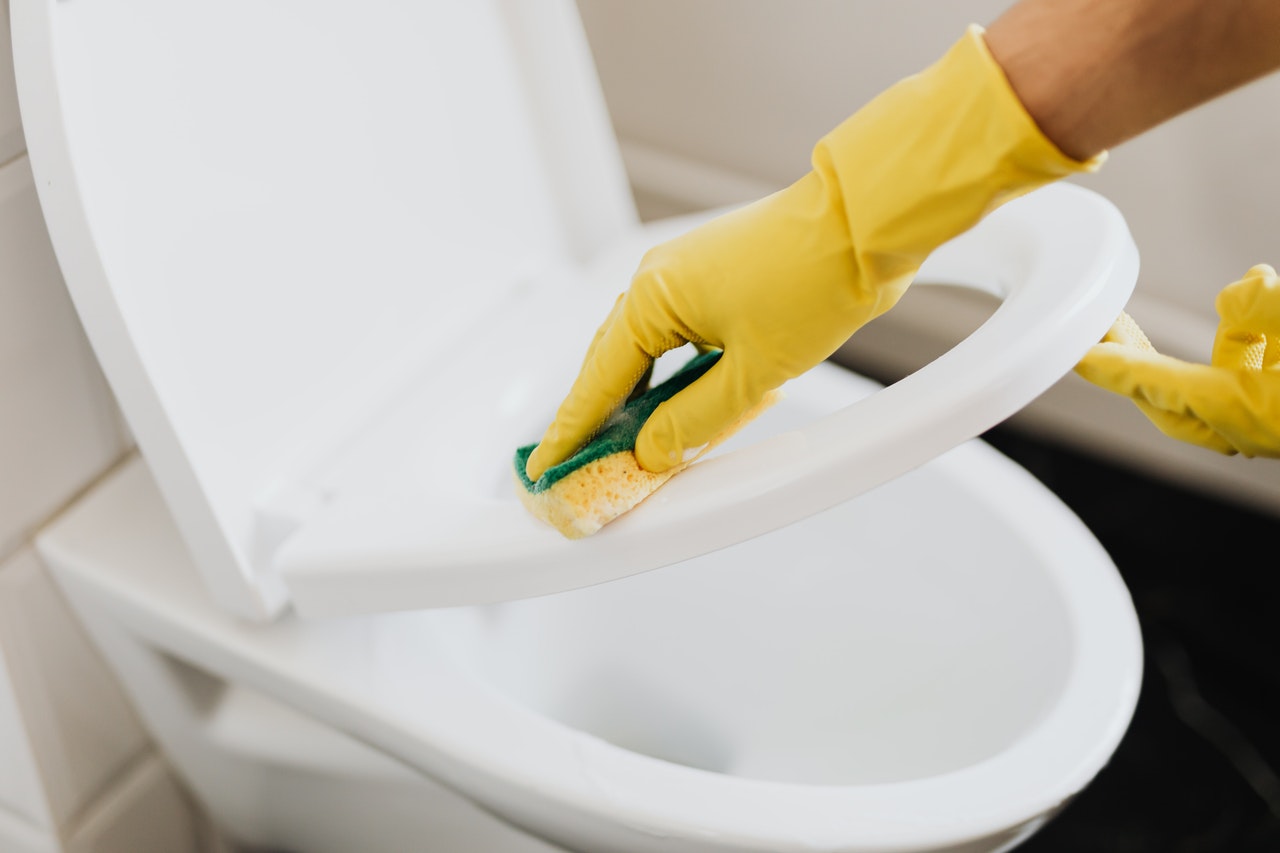We’ve all experienced the worry of an overflowing toilet—but if you’ve only had close calls, you might not know what to do if the worst happens. In this post, we’ll go over some common causes of toilet clogs, what to do if your toilet overflows, and how to determine when you need to call a professional.
What can cause a toilet overflow?
We all know that using too much toilet paper can cause a toilet clog. An even more common culprit is flushing things that shouldn’t be flushed. Bathroom trash like dental floss, cotton balls, and paper towels can tangle or swell and clog the pipes even if they seem small. In addition, pet waste (even “flushable” clumping cat litter) can often cause problems. A low flow toilet, old plumbing, or a problem with the flushing mechanism can create a weak flush. This can allow a clog to form over time, leading to an unexpected overflow.
What to do when your toilet overflows
The first thing you should do is to turn off the water valve at the base of your toilet. Otherwise, you risk water overflowing while the tank is refilling and you are trying to clear the clog. Once the water has stopped flowing, take care of the clog with a plunger. (Make sure you have a toilet plunger and not a sink plunger! Sink plungers are smaller and flat, and will be much less effective, as well as messier).
Before you turn your water back on to refill and flush your toilet to make sure the clog is fully clear, check the flapper and float inside the tank. Take the lid off the tank. The flapper is the rubber disk that covers the hole at the bottom of the tank. When they are old, they can stop sealing well or become disconnected from the lever that holds them down. The float ball should stop the tank from filling, so make sure it is unimpeded and able to move freely.
We recommend at this point that you clean up any major spilled water, especially around the seal of the toilet and any other places that may be at risk for water damage. But wait to do your serious cleaning (which is important for hygiene purposes, once you’re done!) until you’ve turned on the water and run a test flush, ensuring that the clog has been fully taken care of. The last thing you want is your toilet overflowing again right after you’ve mopped!
When do you need a professional
An occasional overflowing toilet probably isn’t a major concern, but sometimes you need to call a professional. If you notice issues with the flapper or other interior parts of the toilet tank, you might replace them yourself. It may be worth having a professional take a look to make sure there aren’t larger problems. When a plunger does not fix the clog it could be because the drain pipe below the toilet is clogged somewhere between the toilet and the septic tank or city sewer connection. If you experience repeated toilet overflows, this may be a sign of a larger problem with your toilet, or plumbing. If so, you’ll want someone to come in and take a look.
We hope this helps you to avoid overflowing toilets, but if a problem should arise, give us a call! Contact us for speedy and trustworthy emergency drain services anytime, we are here 24 hours a day.


